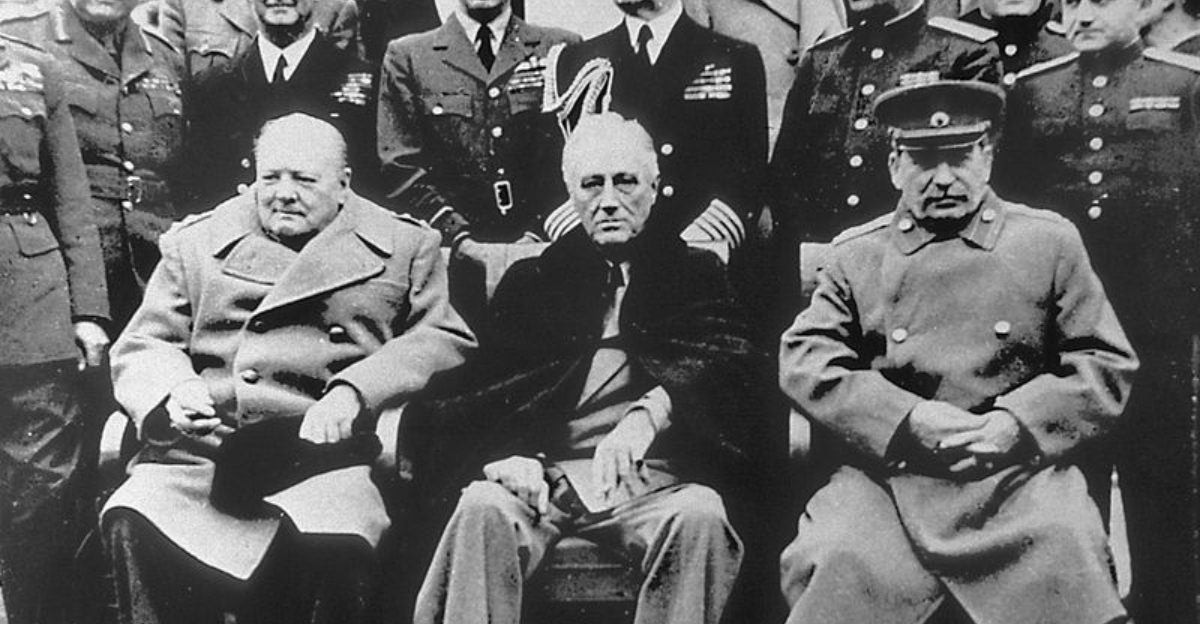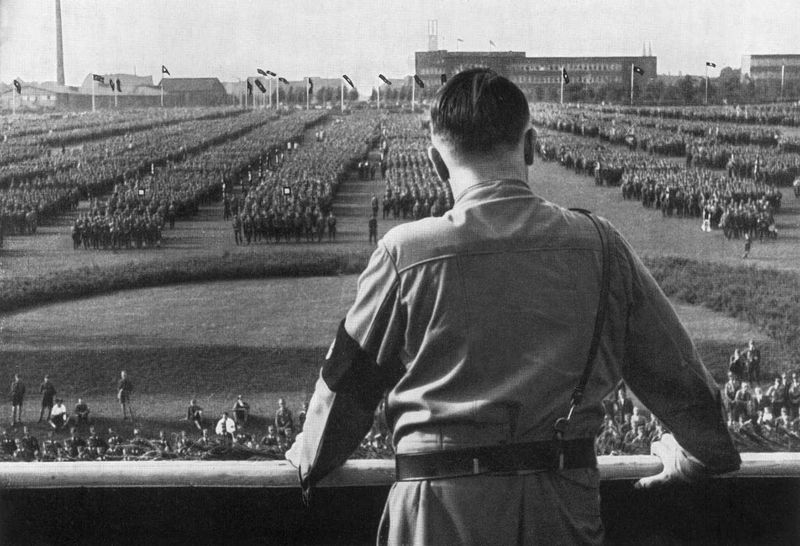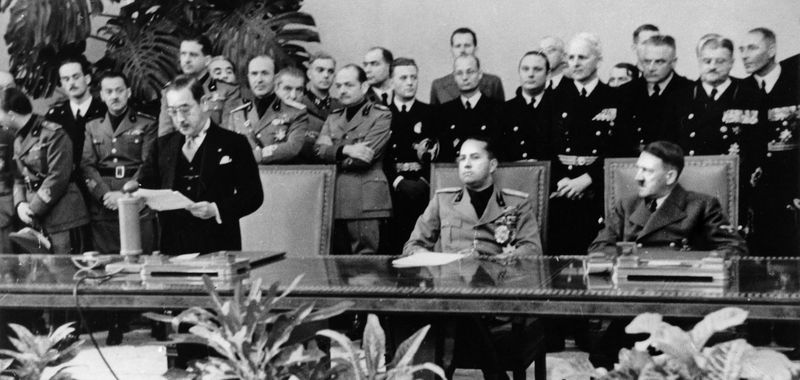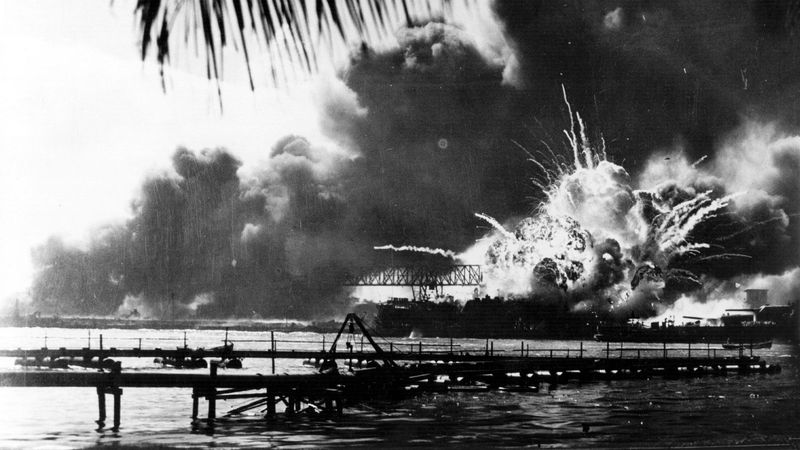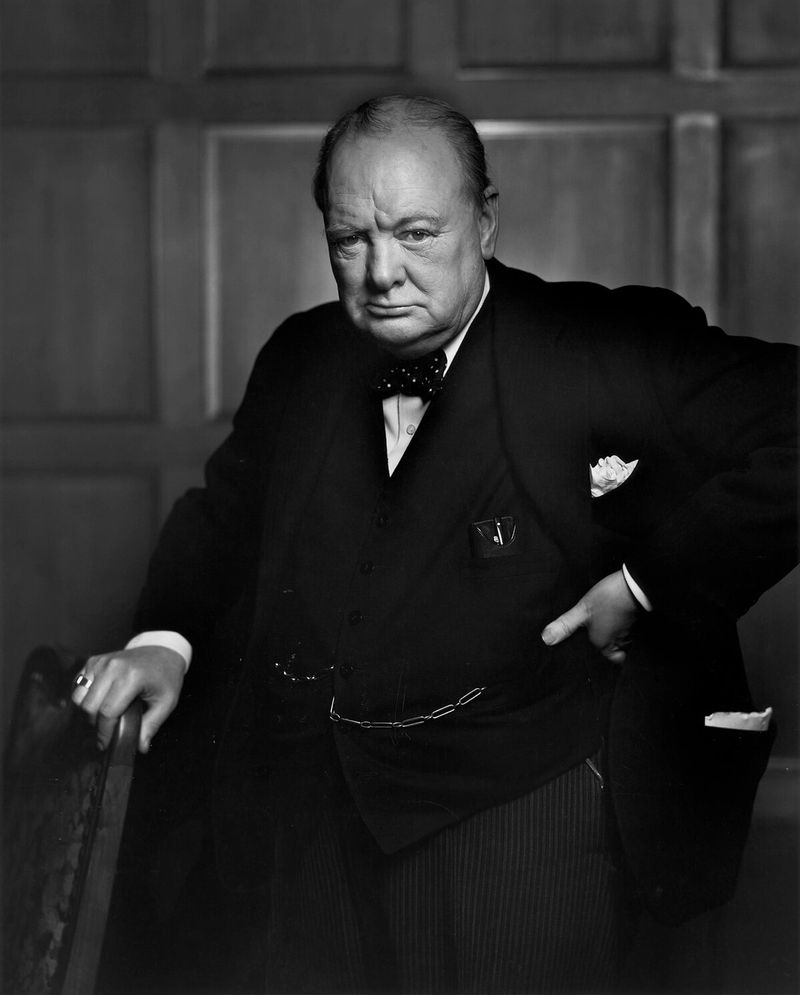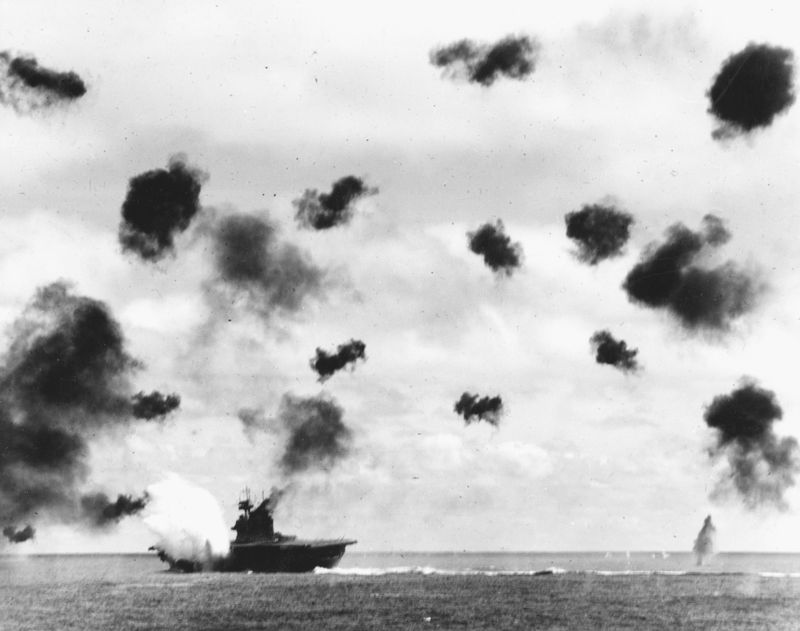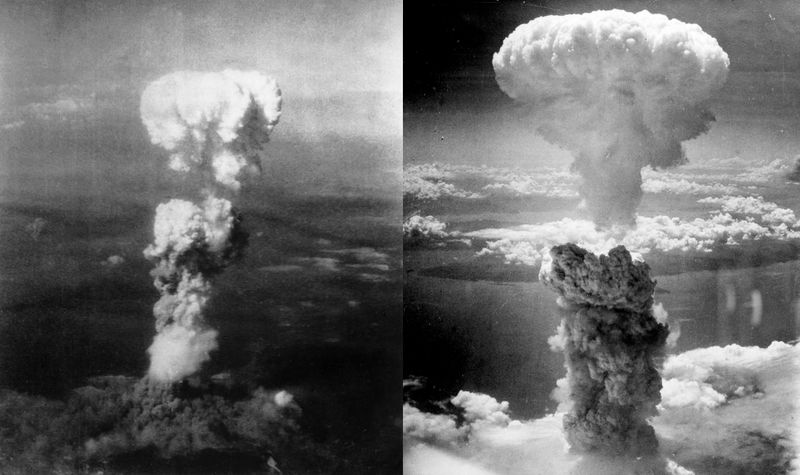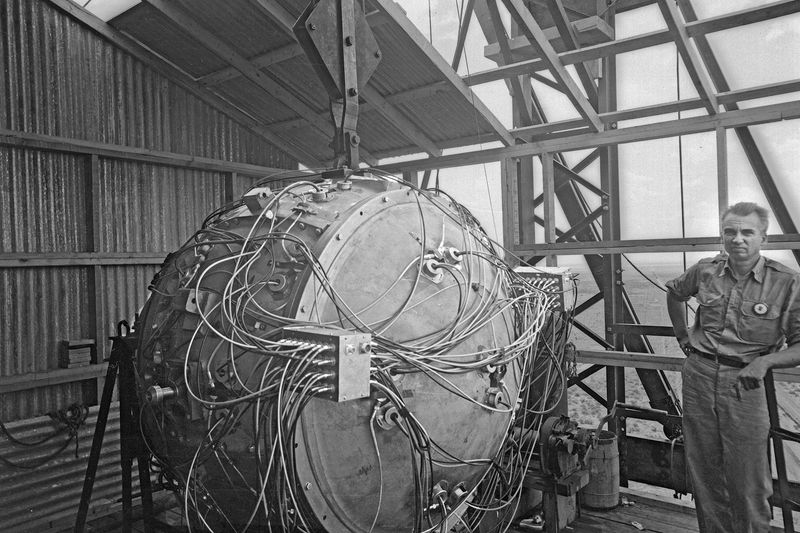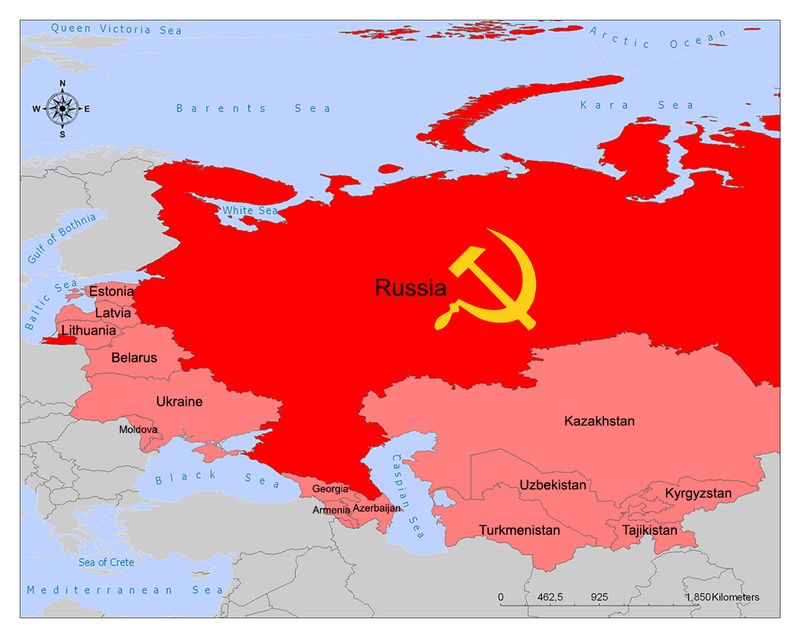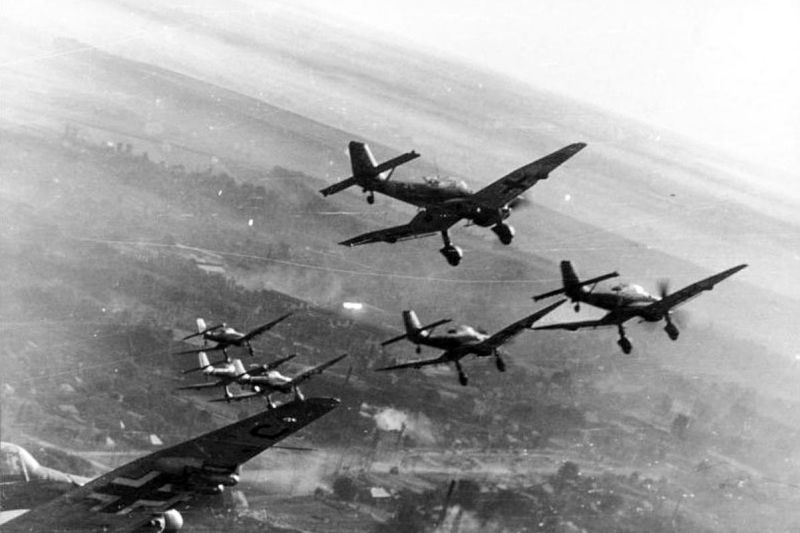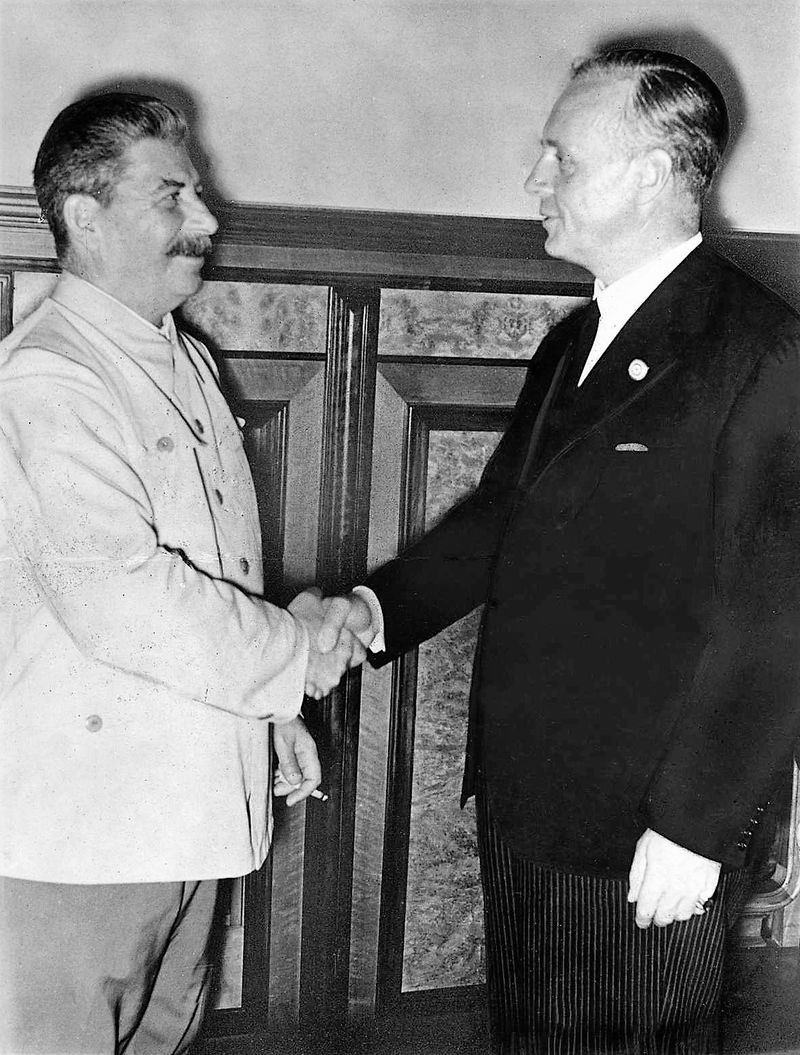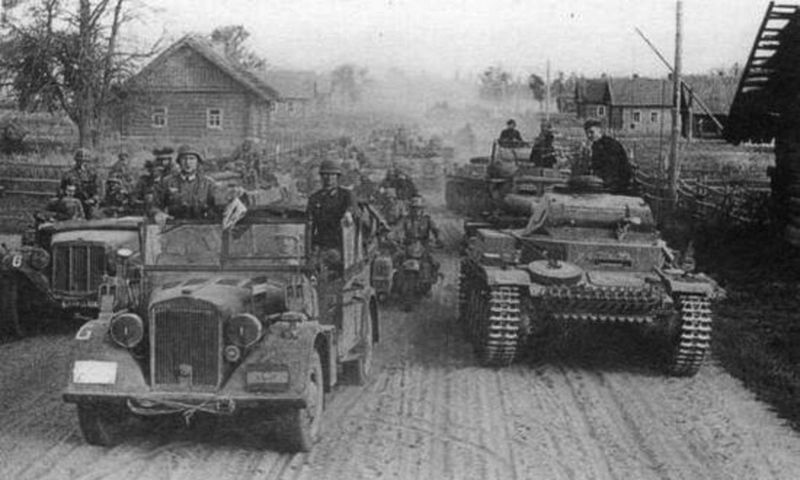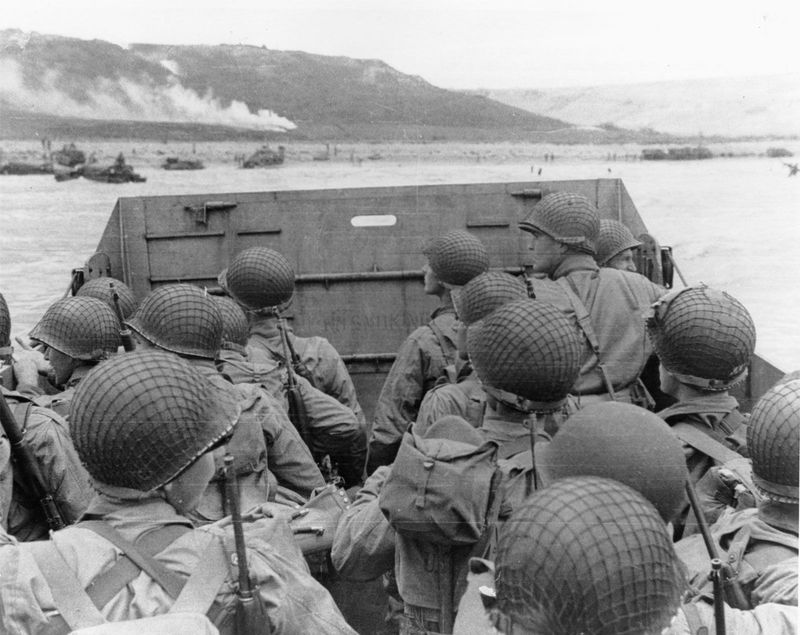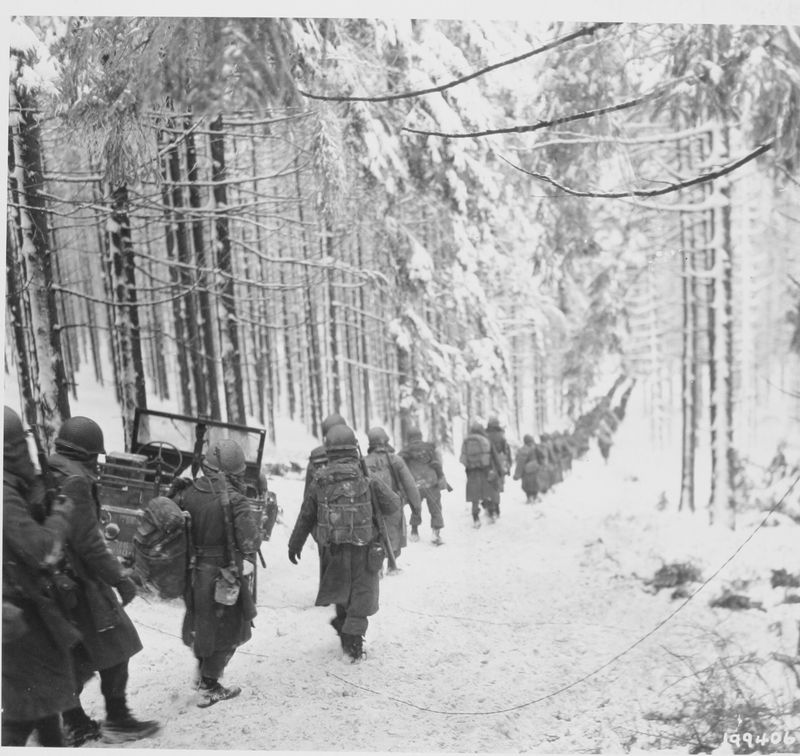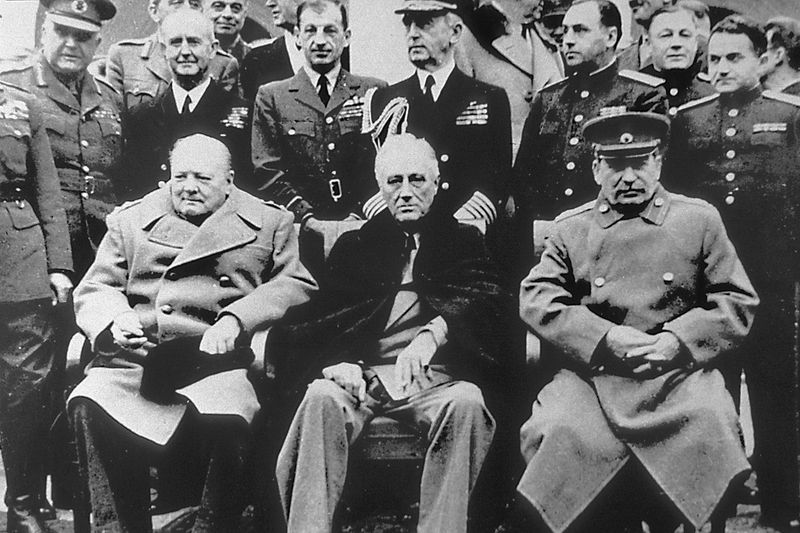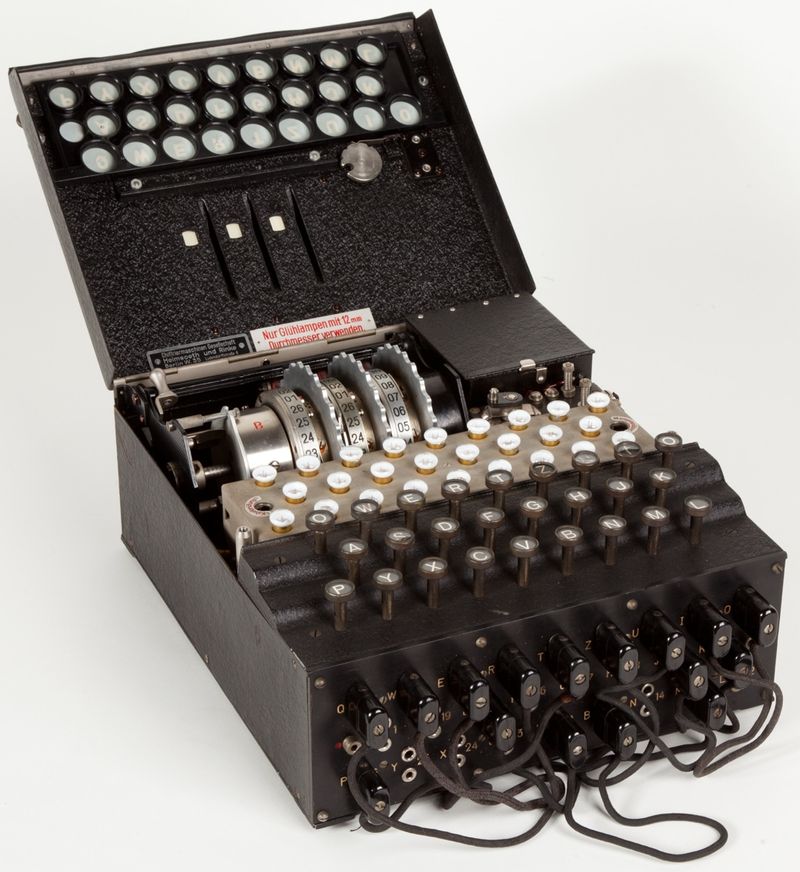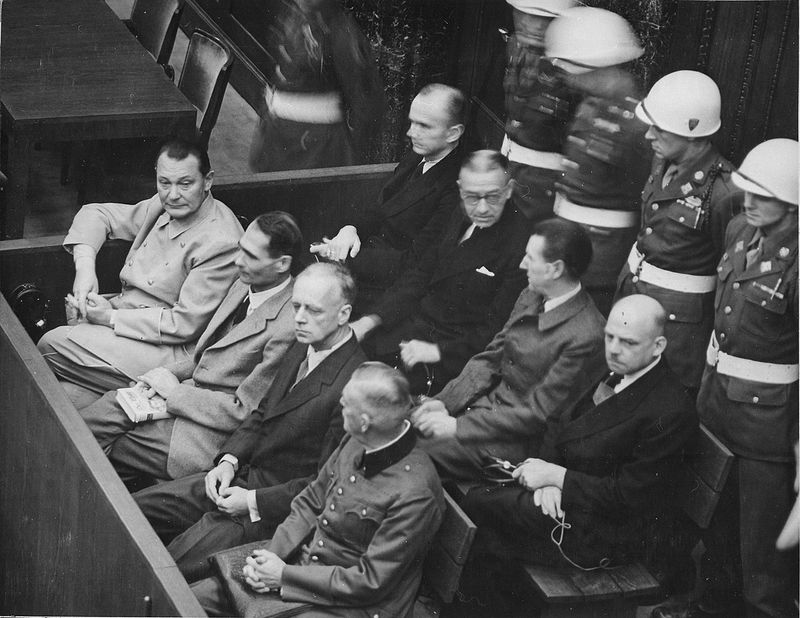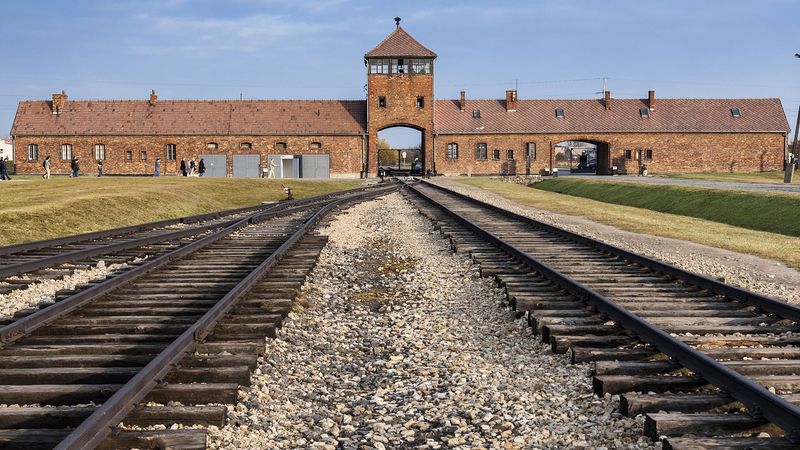World War II, a pivotal period in global history, is often remembered for its monumental battles and significant political shifts.
However, some intriguing questions about this era still stump many, especially Americans.
This blog post explores 20 surprising questions that reveal lesser-known facts and insights about World War II, inviting readers to test their knowledge and learn more about this crucial time.
1. In Which Year Did World War II Begin and End?
World War II officially began in 1939 with Germany’s invasion of Poland, stirring a global conflict that would last until 1945. The war’s start was marked by swift military advances and political upheavals.
1939 saw Europe plunge into chaos as alliances formed and battle lines were drawn. As the war progressed, nations worldwide became embroiled, facing battles on land, sea, and air.
The conflict’s conclusion in 1945 heralded a new world order, with the emergence of the United States and the Soviet Union as superpowers. This period reshaped international relations and set the stage for the Cold War.
2. Which Event in 1939 Triggered the War in Europe?
The immediate trigger for World War II in Europe was Germany’s invasion of Poland on September 1, 1939. This aggressive move by Adolf Hitler’s forces shattered the peace in Europe, prompting Britain and France to declare war on Germany.
Poland quickly became a battleground as German troops advanced with overwhelming force. The invasion of Poland was characterized by Germany’s use of blitzkrieg tactics, which emphasized speed and surprise.
This strategy left Poland at a disadvantage, leading to its rapid fall. The invasion marked the beginning of a global conflict that would engulf multiple continents.
3. Which Countries Were Known as the Axis Powers?
The Axis Powers in World War II consisted of Germany, Italy, and Japan, forming a military alliance that opposed the Allied nations. These countries shared expansionist objectives and sought to establish dominance over large parts of Europe, Africa, and Asia.
Germany, under Adolf Hitler, drove the European campaigns, aiming to consolidate control over Europe. Italy, led by Benito Mussolini, sought to expand its influence in the Mediterranean and Africa.
Meanwhile, Japan pursued territorial expansion in Asia and the Pacific. The Axis Powers coordinated their military strategies but were ultimately defeated by the Allies.
4. Which Major Nations Formed the Core of the Allied Powers?
The core of the Allied Powers during World War II was formed by the United States, the United Kingdom, the Soviet Union, and China. These nations led the effort against the Axis Powers, collaborating on military strategy and resource allocation.
The United States brought its industrial might to the war effort, significantly contributing to the Allies’ success. The United Kingdom, under Winston Churchill, played a crucial role in European battles.
The Soviet Union, led by Joseph Stalin, bore the brunt of the Eastern Front fighting. China, resisting Japanese aggression, contributed significantly in the Pacific.
5. When Did the Japanese Attack Pearl Harbor?
The surprise attack on Pearl Harbor by the Japanese forces occurred on December 7, 1941, marking a pivotal moment in World War II. This assault on the U.S. naval base in Hawaii prompted the United States to enter the war, shifting the balance of power.
Japanese planes targeted American battleships and aircraft, causing significant damage and loss of life. The attack intended to neutralize the U.S. Pacific Fleet and prevent interference with Japan’s expansion plans.
However, it galvanized American public opinion, leading to a unified war effort. Pearl Harbor has since become synonymous with the phrase “a day of infamy.”
6. Where Did the D-Day Landings Occur, and What Was Their Significance?
The D-Day landings occurred on June 6, 1944, on the beaches of Normandy, France, marking a turning point in World War II. This massive amphibious invasion involved Allied forces from the United States, the United Kingdom, Canada, and other nations.
The operation aimed to establish a foothold in Nazi-occupied Europe, leading to the liberation of Western Europe. Despite facing fierce German resistance, the Allies succeeded in securing the beaches.
The success of D-Day paved the way for further advances into Europe, weakening Nazi control and contributing to Germany’s eventual defeat. It remains a symbol of Allied cooperation and bravery.
7. Who Served as Prime Minister of the United Kingdom for Most of World War II?
Winston Churchill served as the Prime Minister of the United Kingdom for most of World War II, becoming a symbol of British resolve and leadership. He assumed office in 1940, following Neville Chamberlain, during one of Britain’s darkest hours.
Churchill’s indomitable spirit and stirring speeches galvanized the British people, encouraging resilience against Nazi Germany’s onslaught. Under his leadership, Britain withstood the Blitz and played a key role in the Allied war effort.
Churchill’s ability to foster alliances with the United States and the Soviet Union was crucial to the ultimate victory. His legacy endures as a defining figure in wartime leadership.
8. Why Was the Battle of Midway a Turning Point in the Pacific Theater?
The Battle of Midway, fought in June 1942, was a decisive turning point in the Pacific Theater of World War II. This pivotal naval battle saw the United States Navy inflict a significant defeat on the Japanese fleet, altering the course of the war in the Pacific.
American forces, having cracked Japanese codes, anticipated the attack and prepared an ambush. The battle resulted in the loss of four Japanese aircraft carriers, crippling Japan’s naval capabilities.
Midway shifted the balance of power in the Pacific, allowing the Allies to take the offensive. This victory marked the beginning of a strategic advantage for the United States.
9. Which Cities Were Targeted by Atomic Bombs, and Which Country Used Them?
Hiroshima and Nagasaki were the two Japanese cities targeted by atomic bombs, used by the United States in August 1945. These bombings marked a dramatic and controversial conclusion to the Pacific conflict.
The bomb dropped on Hiroshima on August 6 resulted in unprecedented destruction and loss of life. Three days later, Nagasaki experienced similar devastation. The use of atomic bombs aimed to hasten Japan’s surrender and avoid a prolonged ground invasion.
While effective in ending the war, the bombings sparked ethical debates and highlighted the destructive potential of nuclear weapons. They remain a somber reminder of the war’s human cost.
10. What Was the Name of the Secret U.S. Project to Develop the Atomic Bomb?
The Manhattan Project was the secret U.S. endeavor to develop the atomic bomb during World War II. Initiated in 1942, this top-secret project brought together leading scientists, including J. Robert Oppenheimer, to harness nuclear fission for military purposes.
The project culminated in the successful testing of the first atomic bomb in July 1945 in New Mexico. This achievement paved the way for the bombings of Hiroshima and Nagasaki.
The Manhattan Project represented a significant scientific and military undertaking, highlighting the rapid advancements in technology during wartime. It also raised profound ethical questions about nuclear weaponry.
11. Which Country Suffered the Highest Number of Casualties During World War II?
The Soviet Union suffered the highest number of military and civilian casualties during World War II, enduring immense human and material loss. The Eastern Front witnessed some of the war’s most brutal battles, including the Siege of Leningrad and the Battle of Stalingrad.
Soviet forces bore the brunt of the Nazi invasion in 1941, facing a relentless assault. Despite initial setbacks, the Soviet Union’s resilience and industrial might turned the tide against Germany.
The war exacted a heavy toll, with millions of Soviet lives lost. The immense sacrifice made by the Soviet people remains a testament to their courage and endurance.
12. What Was the German “Blitzkrieg” Tactic, and Why Was It Effective?
Blitzkrieg, or “lightning war,” was a German military strategy that emphasized speed, surprise, and coordinated attacks. Utilized effectively in the early years of World War II, it involved rapid advances by mechanized units, supported by air strikes, to overwhelm and dislocate enemy forces.
This tactic allowed Germany to swiftly conquer vast territories in Europe, including Poland and France. Blitzkrieg relied on the element of surprise and the ability to exploit enemy weaknesses.
While initially successful, its effectiveness waned as Allied forces adapted. Blitzkrieg remains a significant example of military innovation and tactical evolution during the war.
13. Which Major Allied Nation Initially Signed a Non-Aggression Pact with Germany?
The Soviet Union initially signed a non-aggression pact with Nazi Germany in 1939, known as the Molotov-Ribbentrop Pact. This agreement stunned the world, as both nations pledged not to attack each other.
The pact included secret protocols for the division of Eastern Europe into spheres of influence. The agreement allowed Germany to invade Poland without fear of Soviet intervention, leading to the war’s outbreak.
However, the pact’s fragile peace was shattered in 1941 when Germany launched Operation Barbarossa, invading the Soviet Union. The Soviet Union then joined the Allies, contributing significantly to the eventual defeat of Nazi Germany.
14. What Was the Code Name for Germany’s 1941 Invasion of the Soviet Union?
Operation Barbarossa was the code name for Germany’s ambitious invasion of the Soviet Union, launched in June 1941. This operation marked the largest military invasion in history, involving millions of troops along a vast front.
Germany aimed to swiftly defeat the Soviet Union, capturing key cities and resources. Initially, the invasion met with success, as German forces advanced deep into Soviet territory.
However, logistical challenges, fierce Soviet resistance, and harsh winter conditions stalled the offensive. Operation Barbarossa ultimately failed to achieve its objectives, marking a significant turning point in World War II. The invasion led to a prolonged and costly conflict on the Eastern Front.
15. Where Did the Largest Amphibious Invasion in History Take Place?
The largest amphibious invasion in history took place on the beaches of Normandy, France, during Operation Overlord on June 6, 1944. This monumental military effort involved Allied forces, including the United States, the United Kingdom, and Canada.
The invasion aimed to establish a significant foothold in Nazi-occupied Europe, paving the way for further military advances. Despite facing formidable German defenses, the Allies successfully secured the beachheads.
The success of Operation Overlord was a turning point in the war, leading to the liberation of France and weakening German control. It showcased the effectiveness of Allied coordination and planning.
16. What Was the Final Major German Offensive on the Western Front?
The Battle of the Bulge was the final major German offensive on the Western Front, launched in December 1944. This surprise attack aimed to split Allied forces and capture the Belgian port of Antwerp, creating a “bulge” in the front lines.
German troops advanced through the Ardennes forest, exploiting poor weather conditions to hinder Allied air support. The offensive temporarily caught the Allies off guard, leading to intense fighting.
However, Allied forces, under General Patton, regrouped and counterattacked. The Battle of the Bulge ultimately failed, depleting German resources and hastening the end of the war in Europe.
17. Name One of the High-Level Conferences in 1945 Discussing Postwar Europe.
The Yalta Conference in February 1945 was one of the high-level meetings where Allied leaders discussed postwar Europe. Held in the Crimean resort town of Yalta, it brought together Franklin D. Roosevelt, Winston Churchill, and Joseph Stalin.
The conference aimed to address the reorganization of war-torn Europe and establish a framework for lasting peace. Key topics included the division of Germany, the establishment of the United Nations, and the fate of Eastern Europe.
The agreements reached at Yalta shaped the postwar political landscape but also sowed seeds of future tensions, leading to the Cold War.
18. What Was the Enigma Machine, and Why Was It Significant?
The Enigma machine was a German cipher device used to encrypt military communications during World War II. Its complex code system proved challenging for the Allies to decipher, making it a significant tool for German operations.
However, the British efforts at Bletchley Park, led by Alan Turing and a team of cryptanalysts, eventually cracked the code. This breakthrough provided the Allies with crucial intelligence, aiding in several key military victories.
The success in deciphering Enigma-encrypted messages significantly shortened the war. The story of the Enigma machine highlights the importance of intelligence and technology in modern warfare.
19. Which International Trials Prosecuted Nazi Leaders in 1945-1946?
The Nuremberg Trials, held from 1945 to 1946, were a series of military tribunals that prosecuted prominent leaders of Nazi Germany. These trials were significant for establishing a precedent in international law, holding individuals accountable for war crimes and crimes against humanity.
Key figures, including Hermann Göring and Rudolf Hess, faced charges for their roles in orchestrating the Holocaust and other atrocities. The trials took place in the city of Nuremberg, symbolizing justice and accountability.
The outcomes of the Nuremberg Trials underscored the international community’s commitment to preventing future atrocities and laid the foundation for modern human rights principles.
20. What Was the Largest Nazi Extermination Camp?
Auschwitz was the largest Nazi extermination camp, infamous for the scale of atrocities committed there during World War II. Located in occupied Poland, it served as a central site for the Holocaust, where millions of Jews and other targeted groups were systematically murdered.
Auschwitz was a complex of camps, including Auschwitz I, Auschwitz II-Birkenau, and Auschwitz III-Monowitz. The camp’s infrastructure supported the Nazis’ genocide efforts, with gas chambers and crematoria operating at an industrial scale.
Liberation by Soviet forces in 1945 revealed the horrors within, becoming a symbol of the Holocaust’s brutality. Auschwitz remains a poignant reminder of the depths of human cruelty.
